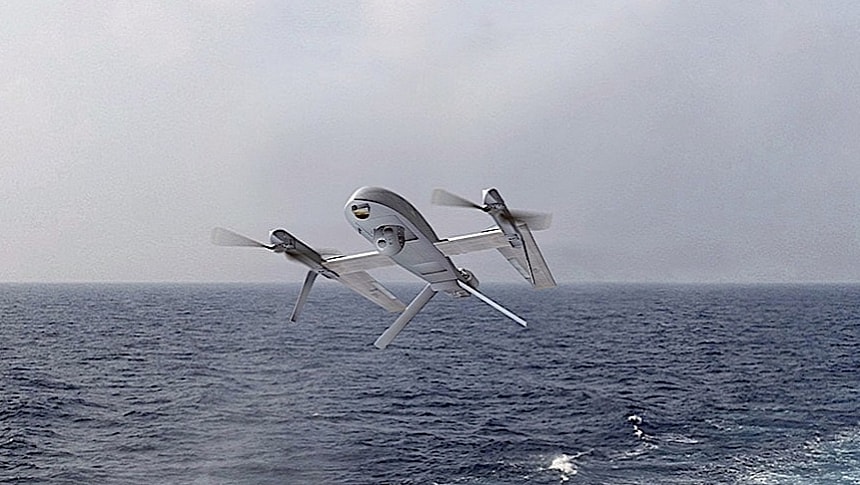Over the course of last week the world got wind of not one, but two autonomous vertical takeoff and landing (VTOL) concept designs various contractors are developing for a program run by the Defense Advanced Research Projects Agency (DARPA). And just a quick look at them makes it clear the future of military aviation will never be the same.
The DARPA program I mentioned is called AdvaNced airCraft Infrastructure-Less Launch And RecoverY. That's ANCILLARY for short, and it's an effort meant to deliver a VTOL drone that can operate from pretty much anywhere, without the need for specialized tools for launch and recovery.
In the summer of 2023 DARPA announced the names of the nine companies that were competing in the program. They were AeroVironment, AVX Aircraft, Griffon Aerospace, Karem Aircraft, Leidos, Method Aeronautics, Northrop Grumman, Piasecki Aircraft, and Sikorsky.
Since that time the list has been trimmed down a bit, and this May we learned of only two companies (for now) moving into the next stage of the program. They are Sikorsky and Northrop Grumman.
We've already looked closely at the aircraft Sikorsky is developing for ANCILLARY. This company's aircraft comes as a drone whose main attribute is that it should be able to take off and land in helicopter fashion, while in flight it should be able to transition to an aircraft-style mode of operation.
The helicopter makes calls its design a tail-sitting rotor blown wing VTOL. What that means is that when parked, the drone, which design-wise is nothing more than a wing with propellers, sits on its tail, with its propeller nacelles pointing up at the sky. When in the air, the thing flies in part using the constant flow of air that goes over the propeller wash across the wing.
The Northrop Grumman, the one we're here to have a quick look at now, is significantly different. Although no actual details about it were released, we do have some photos of the thing to go on.
Unlike the Sikorsky design, which looks like a flying wing, the Northrop is shaped like some sort of crossbreed between a dragonfly and a mosquito. The central body, the place where the payloads will be located, is rather bulky and is flanked on either side by structures meant to support the two propellers.
The drone exists only on paper for now, but given how the company was selected to go ahead with making it, the thing will now move into a more advanced stage where design and systems maturation will be performed.
The exact specs of the aircraft will not be known for a while, as this stage of the project is expected to last at least ten months. Working together with Northrop Grumman on this project are Leigh Aerosystems and Near Earth Autonomy.
As per current plans, DARPA intends to have a functional drone from the ANCILLARY program as soon as 2026. The main role of the aircraft will be to conduct intelligence, surveillance, and reconnaissance (ISR) missions.
In the summer of 2023 DARPA announced the names of the nine companies that were competing in the program. They were AeroVironment, AVX Aircraft, Griffon Aerospace, Karem Aircraft, Leidos, Method Aeronautics, Northrop Grumman, Piasecki Aircraft, and Sikorsky.
Since that time the list has been trimmed down a bit, and this May we learned of only two companies (for now) moving into the next stage of the program. They are Sikorsky and Northrop Grumman.
We've already looked closely at the aircraft Sikorsky is developing for ANCILLARY. This company's aircraft comes as a drone whose main attribute is that it should be able to take off and land in helicopter fashion, while in flight it should be able to transition to an aircraft-style mode of operation.
The helicopter makes calls its design a tail-sitting rotor blown wing VTOL. What that means is that when parked, the drone, which design-wise is nothing more than a wing with propellers, sits on its tail, with its propeller nacelles pointing up at the sky. When in the air, the thing flies in part using the constant flow of air that goes over the propeller wash across the wing.
The Northrop Grumman, the one we're here to have a quick look at now, is significantly different. Although no actual details about it were released, we do have some photos of the thing to go on.
Unlike the Sikorsky design, which looks like a flying wing, the Northrop is shaped like some sort of crossbreed between a dragonfly and a mosquito. The central body, the place where the payloads will be located, is rather bulky and is flanked on either side by structures meant to support the two propellers.
The drone exists only on paper for now, but given how the company was selected to go ahead with making it, the thing will now move into a more advanced stage where design and systems maturation will be performed.
The exact specs of the aircraft will not be known for a while, as this stage of the project is expected to last at least ten months. Working together with Northrop Grumman on this project are Leigh Aerosystems and Near Earth Autonomy.
As per current plans, DARPA intends to have a functional drone from the ANCILLARY program as soon as 2026. The main role of the aircraft will be to conduct intelligence, surveillance, and reconnaissance (ISR) missions.















